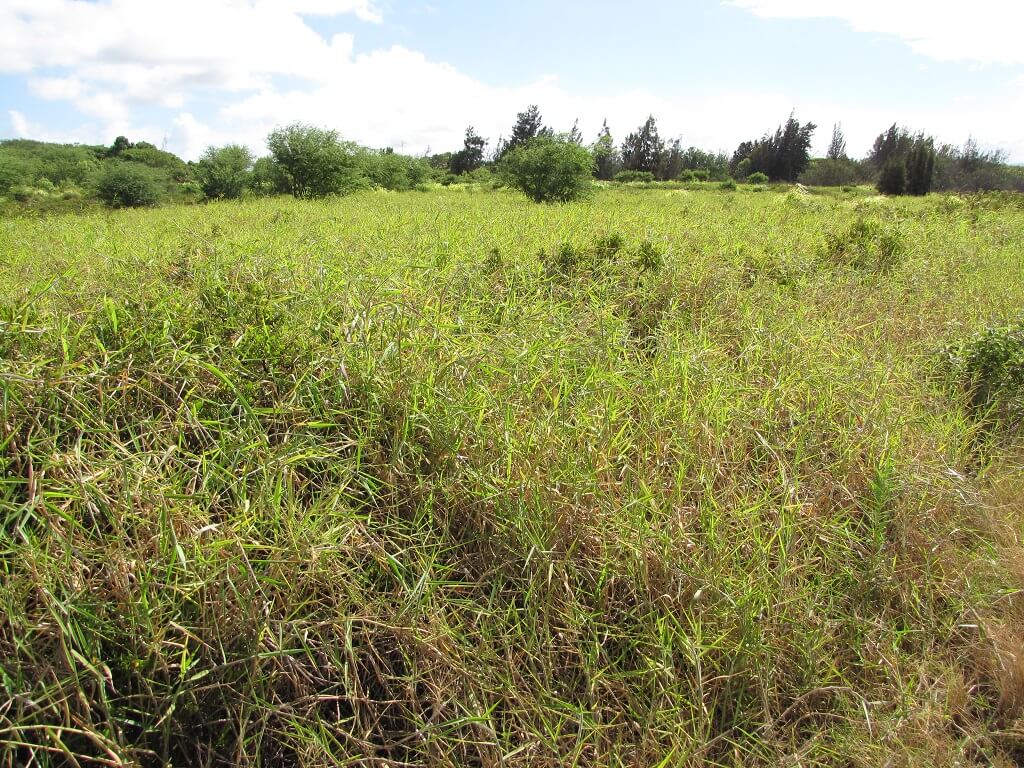Atlas of Living Australia website, available at: Atlas of Living Australia – Open access to Australia’s biodiversity data (ala.org.au)
Australian Plant Census (2011) available at: Vascular Plants APNI (biodiversity.org.au).
Bunn, S.E., Davies, P.M., Kellaway, D.M. and Prosser, I.P. (1998) Influence of invasive macrophytes on channel morphology and hydrology in an open tropical lowland stream, and potential control by riparian shading. Freshwater Biology 39: 171–178.
Department of Sustainability, Environment, Water, Population and Communities (2012) Threat abatement plan to reduce the impacts on northern Australia’s biodiversity by the five listed grasses. Commonwealth of Australia. Available at: Threat abatement plan to reduce the impacts on northern Australia's biodiversity by the five listed grasses - DCCEEW
Douglas, M.M. and O’Connor, R.A. (2003a) Effects of para grass (Urochloa mutica (Forssk.)T.Q.Nguyen) invasion on terrestrial invertebrates of a tropical floodplain. In Sindel, B.M. and Johnson, S.B. (eds.) Proceedings of the 14th Australian Weeds Conference. Weed Science Society of New South Wales, Sydney, pp. 168–171.
Douglas, M.M. and O’Connor, R.A. (2003b) Effects of the exotic macrophyte, para grass (Urochloa mutica), on benthic and epiphytic macroinvertebrates of a tropical floodplain. Freshwater Biology 48: 962–971.
Douglas, M.M. and O’Connor, R.A. (2004) Weed invasion changes fuel characteristics: Para grass (Urochloa mutica (Forssk.) T.Q.Nguyen) on a tropical floodplain. Ecological Management and Restoration 5: 143–145.
Grace, B.S., Gardener, M.R. and Cameron, A.G. (2004) Pest or pasture? Introduced pasture grasses
in the Northern Territory. In Sindel, B.M. and Johnson, S.B. (eds.) Proceedings of the 14th Australian Weeds Conference. Weed Science Society of New South Wales, Sydney, pp. 157–160.
Hannan-Jones, M. and Csurhes, S. (2012) Invasive species risk assessment: Para grass Urochloa mutica. Queensland Department of Agriculture, Fisheries and Forestry, Brisbane, Queensland. Available (updated) at: Para Grass Risk Assessment (daf.qld.gov.au) [pdf link].
Jacobs, S.W.L. and Wall, C.A. (1993) Urochloa. In: Harden, G.J. (ed.) Flora of New South Wales, vol. 4. New South Wales University Press, Kensington, NSW.
Northern Territory Department of Land Resource Management (2012) Weed ID Deck Grasses.
Northern Territory Department of Land Resource Management (undated) Weed note: Para grass Urochloa mutica (formerly Brachiaria mutica).
Paczkowska, G. and Chapman, A.R. (2000) The Western Australian flora: a descriptive catalogue. Wildflower Society of Western Australia (Inc.), Western Australian Herbarium, CALM and the Botanic Gardens and Parks Authority, Perth, Western Australia.
Queensland Department of Agriculture, Fisheries and Forestry (2013) Fact sheet: Not declared pest plant para grass Urochloa mutica.
Smith, N.M. (2002) Weeds of the wet/dry tropics of Australia: a field guide. Environment Centre of the Northern Territory, Darwin, Northern Territory.
Stephens, K.M. and Dowling, R.M. (2001) Wetland Plants of Queensland. CSIRO Publishing, Melbourne, Victoria.
Wesley-Smith, R.N. (1973) Para grass in the Northern Territory – parentage and propagation. Tropical Grasslands 7: 249-250.
Williams, P.R., Collins, E.M. and Grice A.C. (2005) Cattle grazing for para grass management in a mixed species wetland of north-eastern Australia. Ecological Management and Restoration 6: 75–76.



































